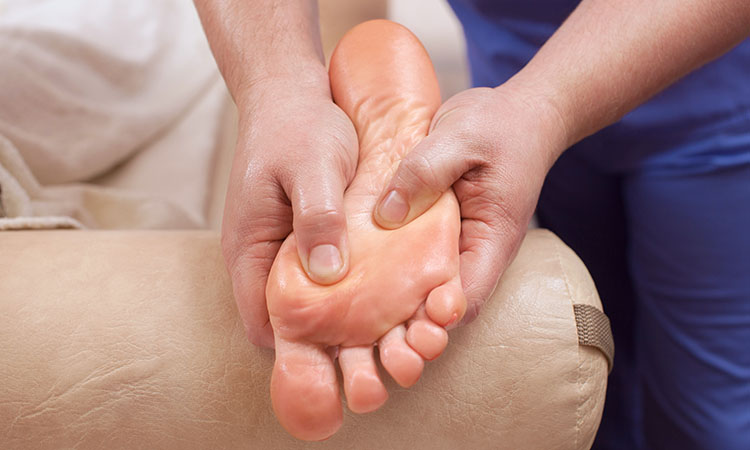What is it?
Plantar Fasciitis is a common foot complaint which presents as pain experienced under the foot in the heel region. It is commonly referred to as ‘heel spurs’ but is more correctly known as plantar fasciitis. The condition is often caused by subtle changes in foot structure which occurs over time.
These changes result in the gradual flattening of the arch structure. This ligament acts as a shock absorber whilst walking. As the foot flattens, it causes stretching of the ligament, which can then cause inflammation and pain, often at the site where the ligament attaches to the heel
bone.
Do you have these signs and symptoms?
● Pain may be sudden or more gradual and is commonly in one foot only
● Pain tends to be worst first thing in the morning or when stepping out of bed or having rested and then getting up to walk
● The pain is localised under the foot at the heel area, or may extend forward along the ligament
● The pain is described as a burning or stabbing sensation
● On examination the pain can often be reproduced by pushing where the ligament
attaches to the underside of the heel bone
How do I get it better?
Treatment for Plantar Fasciitis is very complex and can take some time to get right. It will include things that can be done at home and during the Podiatry appointment. Treatment at home
● Stretching the calf muscles. Your Podiatrist will demonstrate and discuss appropriate dosages for this exercise.
● Wear good supportive footwear specific to your foot type and activity
● Topical anti-inflammatory gel or cream
● Self massage of the foot and calf muscles
Podiatry treatment
The key for the treatment of plantar fasciitis is determining the cause of the excessive strain on
the plantar fascia. Treatment may include:
● Changing to more appropriate footwear
● When the cause is a flat foot – an orthotic or insole aimed at improving foot function and reducing the stress or strain on the plantar fascia will help
● When the cause is a high arch foot – an orthotic or insole which cushions the heel and absorbs shock will help
● Massage and dry needling into tight calf muscles or tense plantar fascia attachment points will reduce irritable spots in these tight areas relax themselves
What to do next?
See a good Podiatrist, like ourselves at Holistic Foot Clinic, who understands that Heel Pain can have a number of factors that contribute to pain. It is important to get onto this pain earlier rather than later, to prevent the pain from getting worse and becoming more of a long term issue.
To make an appointment follow the link to our bookings page https://holisticfootclinic.com.au/booking/ or give us a call on 1300 185 350

